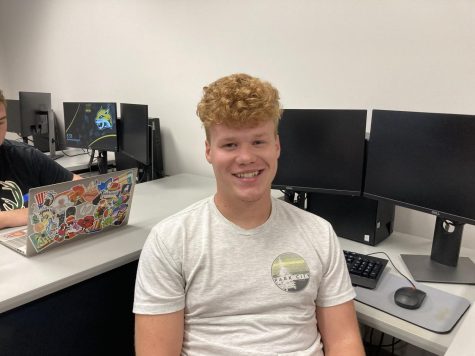Sun Earth Universe Exhibition
September 28, 2022
Wayne State College’s interactive Sun Earth Universe Exhibition is now open to all and on display for a limited time only in the A.J. Schock Natural History Museum in 113 Carhart Science.
The exhibit is geared towards younger children but is open to all, providing high quality information about space and nanomaterials. It aims to get people excited about space and allows them to experience new information. The exhibit features foam models, a model rocket building station, infrared/ultraviolet imaging stations and other interactive activities.
The museum itself is open to the public and admission is free. The Sun Earth Universe Exhibit is available Monday through Friday 8 a.m. to 5 p.m. through December as well as special showings for the homecoming reception Oct. 7 from 2-5 p.m. as well as every second and fourth Sunday through Dec. 11.
“I think knowing the unique properties of Earth gives us a better appreciation for how unique Earth is,” Mark Hammer, the director of the museum, said.
Hammer also shared that this exhibit will give the public a better understanding of how Earth fits into the solar system.
The exhibit is paired with the planetarium in efforts to connect and expand the experience of the museum.
“We are trying to come up with an event that highlights the different topics that are associated with that exhibit with stuff that is in the planetarium.” Todd Young, the planetarium manager, said.
Young and Hammer are working on creating events where a planetarium show will play and teach about the Sun, Earth and Universe. Then students are able to attend the exhibit and further their learning.
“I think it’s good to know that stuff,” Young said. “I mean, where does the year come from? Where does the day come from… and all of that is astronomically connected.”
He said he hopes that the planetarium will drive more traffic to the exhibit and that the exhibit will do the same for the planetarium.
“Between the public shows, the private shows, the field trips… about 5,000 [people] pass through the planetarium every year,” Young said.
Between WSC students and others from Nebraska and beyond who are traveling for field trips, Young and Hammer said they are hopeful that the exhibit will draw in many, and the planetarium will give them reason to stay and further their learning of the cosmos.
“The exhibit is temporary so enjoy it while you can, because we’ll have to send it off to the next institution soon,” Young said.










